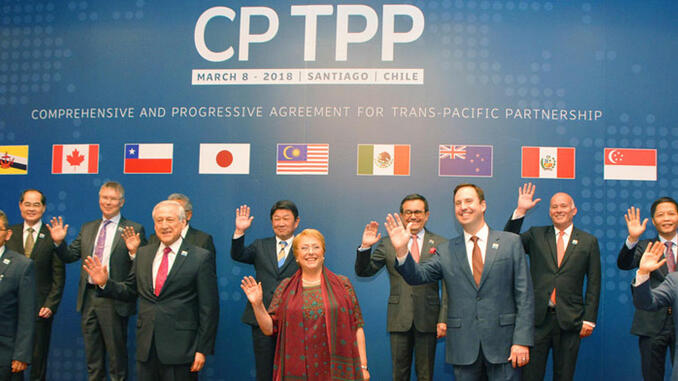
When Donald Trump lived up to his campaign promise and pulled out of the Trans-Pacific Partnership (TPP) trade deal, many thought the agreement was dead. A year later, the TPP has been brought back from the dead, largely thanks to Japan’s Shinzo Abe, in a new form now referred to as the tongue-twisting CPTPP or the Comprehensive and Progressive Agreement for Trans-Pacific Partnership. The new deal was signed on March 8, in Chile. It is expected the agreement will come into force in 2019.
The move by Trump to withdraw from the TPP was controversial. In effect, many believed he was giving away something for nothing. That “something” was a large piece of leverage against China and its trade relations. Trump had called the agreement “another disaster done and pushed by special interests who want to rape our country, just a continuing rape of our country.”
After the revised TPP, Trump may want to reconsider his actions once he has seen just how important the agreement is to America’s trading partners. Luckily for him the new authors of the agreement have allowed a provision for the U.S. and other non-members to join the 11-nation agreement later. It remains to be seen if Trump would do just that. Back in January Trump said he “would do TPP if we made a much better deal than we had.” But the damage has been done and America has lost its negotiating leverage in the deal. It is highly unlikely that the partners in the deal would want to renegotiate.
The 11 members of the agreement— Australia, Brunei, Canada, Chile, Japan, Malaysia, Mexico, New Zealand, Peru, Singapore and Vietnam—make up 13.5 percent of the world economy. Each member can expect a one percent growth in national income on average by 2030 according to the estimates of Professor Shujiro Urata of Waseda University in Tokyo.
China has been working on a less far reaching trade deal in recent years that it has struggled to make progress on. The Regional Comprehensive Economic Partnership (RCEP) is a 16-nation agreement that could be signed into being as early as 2019. If it had been signed in a world without the TPP, China would have enhanced its regional dominance and provided Xi Jinping with leverage to further neighbors into his arms.
